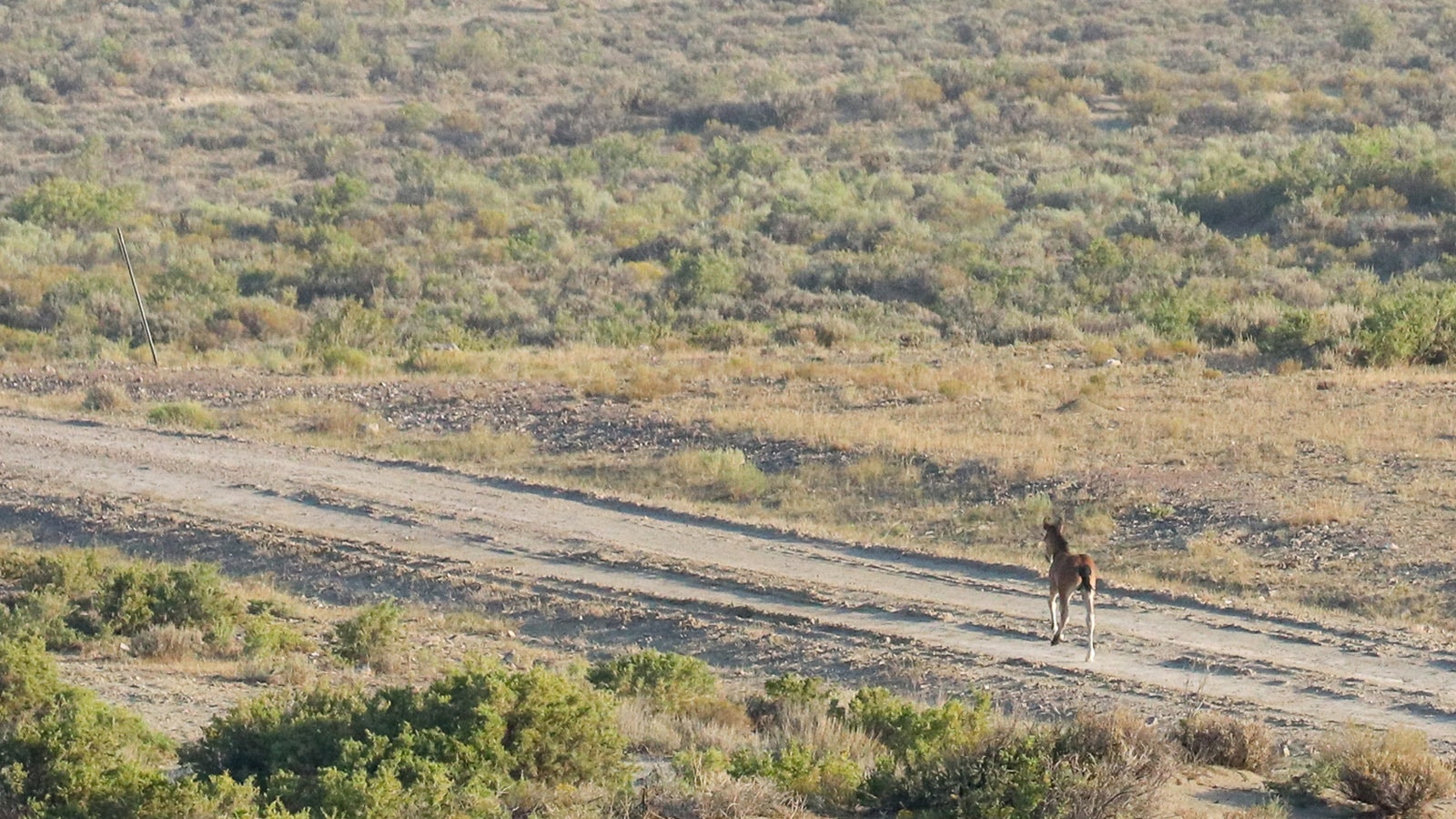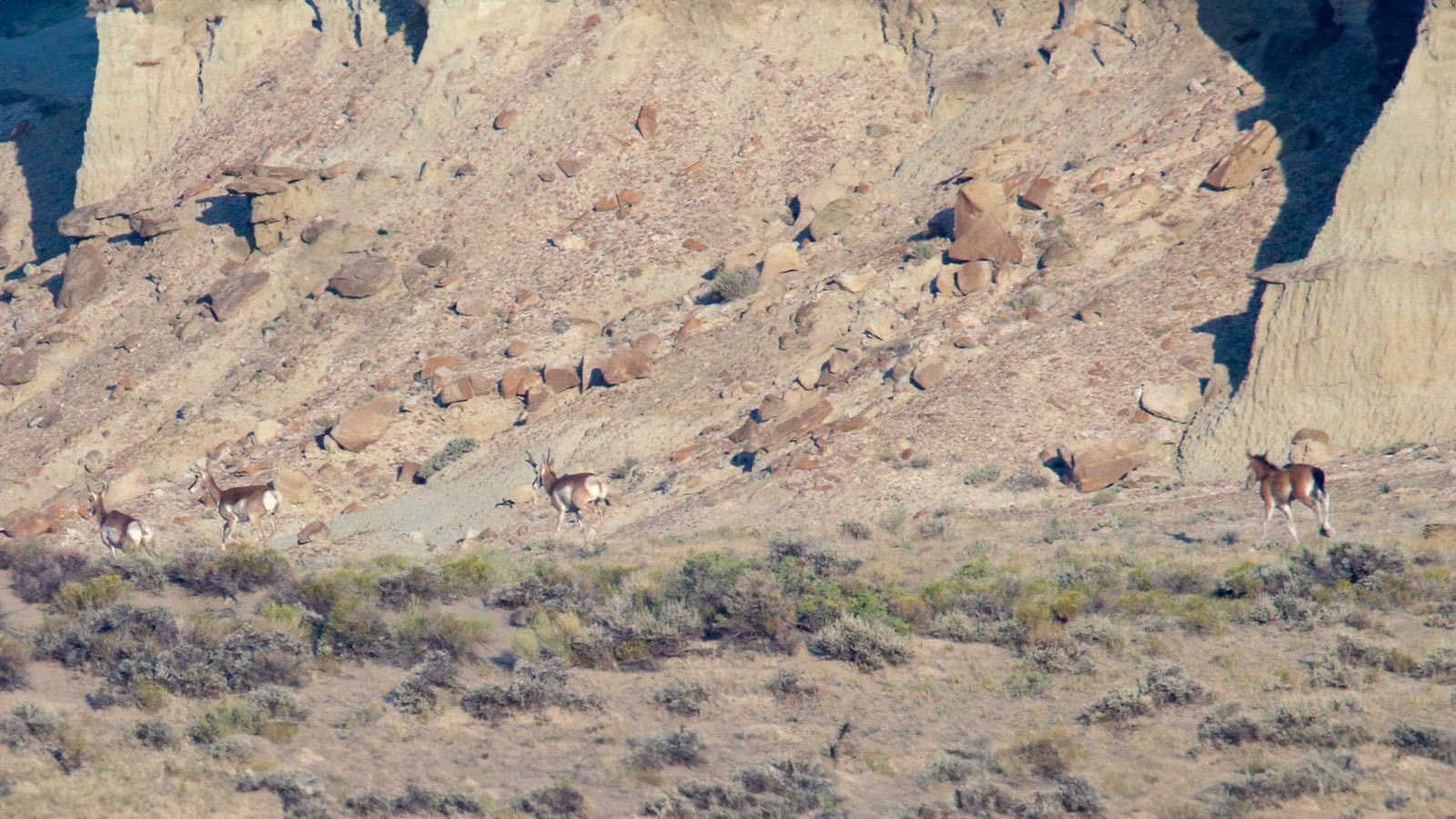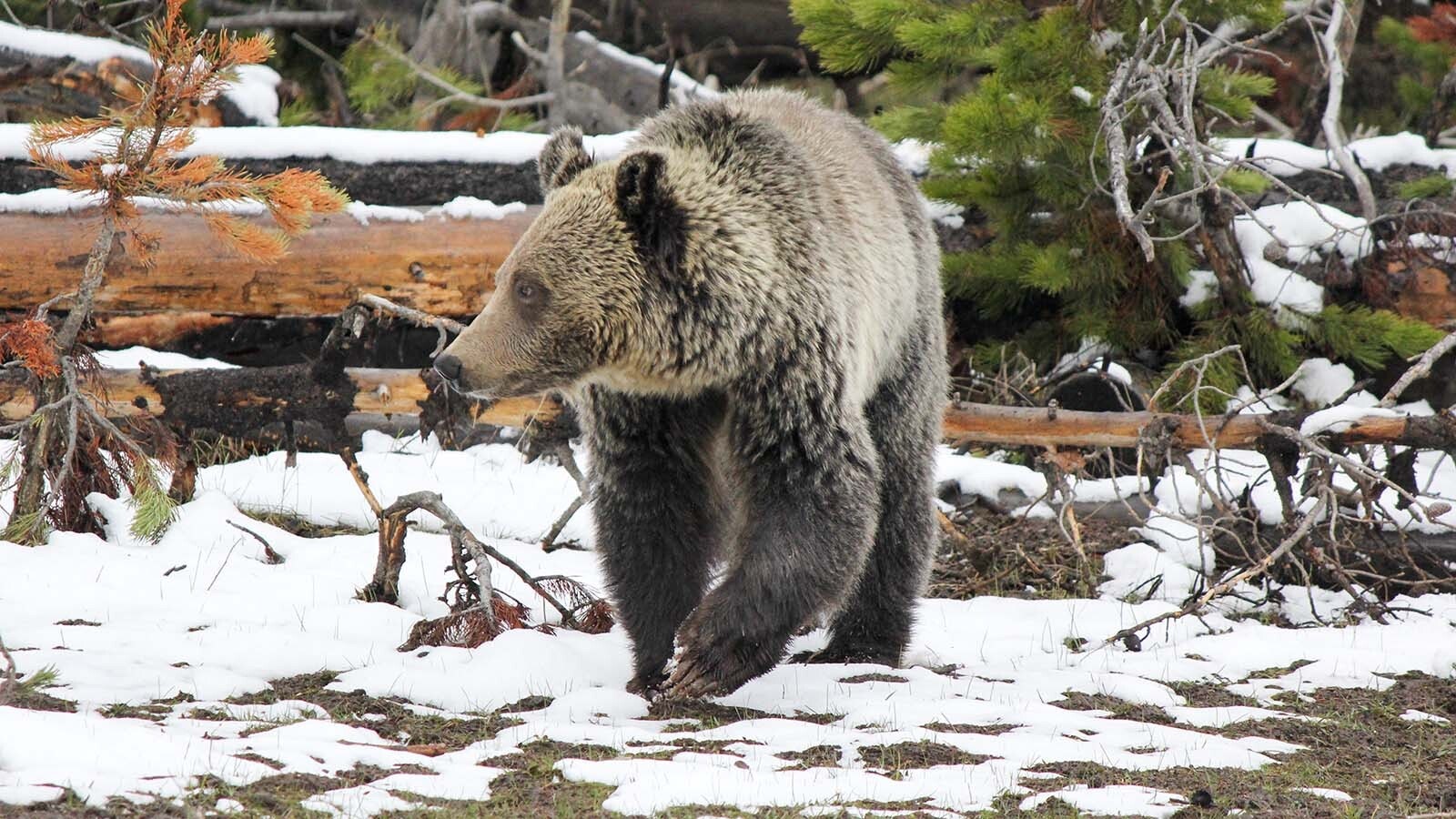Separated from his herd during a Wyoming mustang roundup, a young colt briefly tried to join a band of pronghorn on July 26 but was eventually roped by a wrangler and returned to his mother.
Wild horse advocates claim that the incident encapsulated a persistent problem with Bureau of Land Management mustang roundups: foals (young horses) falling behind as herds are driven with helicopters.
Male foals are called colts, and females are called fillies.
Foals get lost, stressed out and sometimes die, advocates say.
BLM officials say that incidents involving foals during roundups are rare, but sometimes unavoidable.
Two foals died during the roundups the wayward colt was involved in, according to the BLM.

Other Roundups Halted
The agency captured 1,675 horses during the roundups in the Adobe Town wild horse management area (HMA) in remote south-central Wyoming.
The BLM is trying to whittle the mustang population there down to between 259 and 526 horses.
The roundups began on July 15. The helicopter drives ended on Thursday, and the BLM hopes to have the entire operation wrapped up by Saturday.
The roundups were run out of the BLM’s Rawlins field office.
They’re not to be confused with other roundups planned this summer out of the BLM’s Rock Springs office.
Those were planned in the Salt Wells Creek area, but also in another part of the Adobe Town area, where the BLM plans to “zero out” entire herds.
Those roundups would have included some of Wyoming’s rare curly-haired mustangs.
Following a lawsuit by wild horse advocates, those roundups were halted by a federal court order last month.
Running With Pronghorn
Colorado-based mustang advocate Carol Walker and Steve Paige, who is with the American Wild Horse Conservation advocacy group, were in a public viewing area July 26, watching the roundup.
They told Cowboy State Daily that they watched the drama with the colt unfold, and Paige took numerous photographs of the incident.
Walker said she saw several foals get separated from their mothers during the helicopter horse drives.
Paige said the colt in question was about a mile behind the main herd when he and Walker spotted it.
He estimated it to be two to three months old.
“It was obviously too young to keep up with the herd,” he said.
The foal looked lonely and frightened and stumbled upon a band of pronghorn that were in the area.
“He was so little, he could barely see over the sagebrush. And the first thing he sees in those antelope,” Paige said.
He surmised that the colt, missing his mother, saw other four-legged creatures, and decided to try joining them.
As the pronghorn fled, the colt followed them, and all the animals later went out of sight behind some hills, he said.
Later, the colt apparently “circled back” and showed back up behind the public viewing area, Walker said.
Later, a wrangler roped the colt and led it away.
Walker and Paige said they were told the colt was reunited with its mother.

‘Other Running Animals’
BLM Rawlins office field manager Tim Novotny and agency spokeswoman Allegra Keenoo later confirmed to Cowboy State Daily that the colt was reunited with his mother.
Novotny said it appeared that the colt instinctively tried to follow the pronghorn.
“That foal broke off and joined with what it saw were other running animals,” he said.
He also confirmed that other young horses got separated from their mothers during the roundups. But like the colt, they were captured and reunited with their mothers, he said.
The two colts that died during the operation succumbed to “capture myopathy” (essentially a severe stress reaction), Keenoo said.
“In total, 1,675 animals were gathered and there were seven deaths. A less than 1% mortality rate. The foals that did separate were gathered and reunited with their mares. They were also reported to be doing well,” she stated in a follow-up email to Cowboy State Daily.

Foaling Season
A point of contention between the BLM and wild horse advocates is whether July is too early to start roundups.
Advocates claim that July way too soon after foaling season – or the time when mares (female horses) give birth to their young.
Walker said that she’s seen foals that appeared to be only a few days old struggling to keep up during helicopter drives.
Novotny said the BLM runs the roundups under animal welfare protocols. That includes not running roundups during peak foaling season.
By July, most foals are big and strong enough to keep up during roundups, he said.
He acknowledged there are sometimes foals that are younger than expected.
“There can be instances where a foal is born a little later than they typically would be,” he said.
Mark Heinz can be reached at mark@cowboystatedaily.com.





